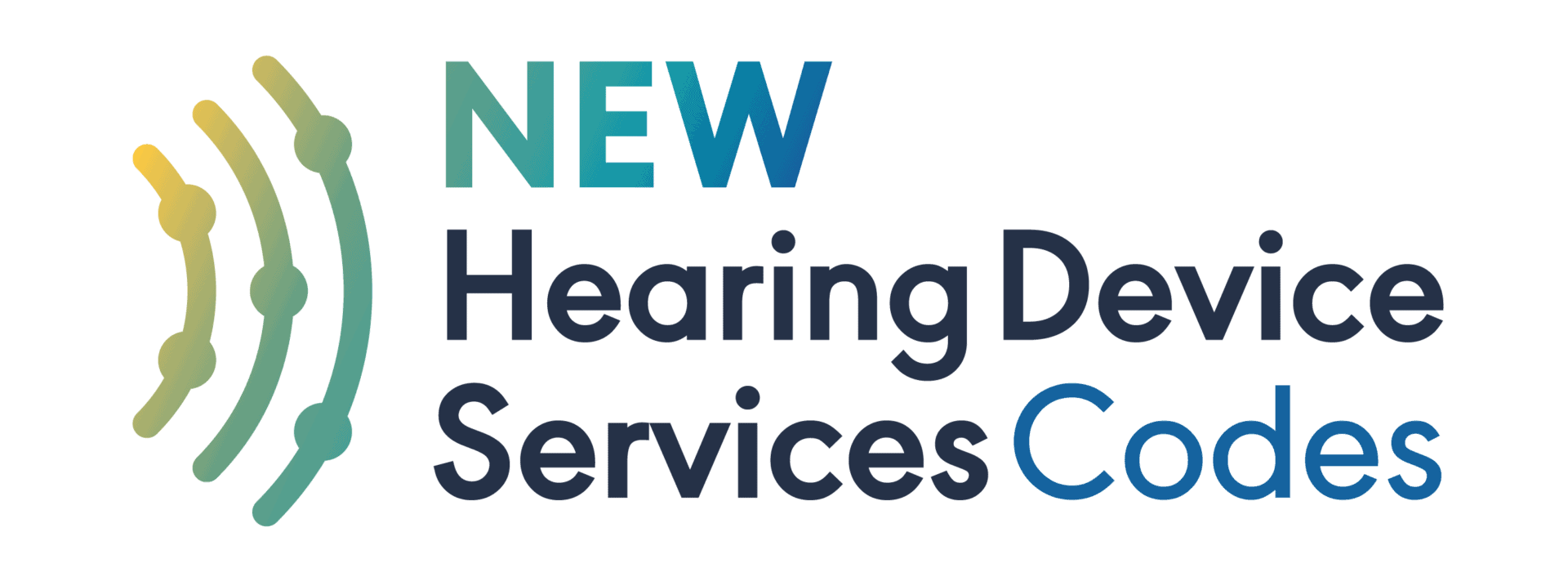


After more than three decades, the longstanding CPT® codes for hearing aid services—CPT codes 92590–92595—are being replaced. This update deletes the six outdated codes, in use since 1993, and introduces 12 new codes designed primarily for use with air conduction hearing devices in the treatment of hearing loss. Beginning January 1, 2026, audiologists will use the new set of CPT codes to describe professional services provided for hearing aid and hearing device-related services, as outlined in the proposed rule for the 2026 Medicare Physician Fee Schedule.
This major update results from a multiyear collaborative effort between the American Academy of Audiology and the American Speech-Language-Hearing Association (ASHA) to modernize the coding framework. The new codes were designed to capture the professional services audiologists provide for hearing aids and related devices today and into the future—including evolving technologies and patient care models.
The legacy codes used vague terminology such as “examination” and “check,” which failed to reflect the complexity and breadth of audiologic services. They also did not accommodate the integration of digital technologies or more advanced diagnostic tools. In contrast, the new code set provides greater clarity, accuracy, and alignment with CPT coding conventions, offering improved support for documentation, reimbursement, and advocacy efforts.
The newly established hearing device services CPT codes do not have assigned relative value units (RVUs), as they did not undergo review by the American Medical Association Relative Value Update Committee (AMA RUC) and are not priced under the Medicare Physician Fee Schedule. As a result, these codes fall outside of Medicare’s reimbursement framework, giving audiologists greater flexibility to negotiate payment rates directly with commercial payers, employers, or patients. The absence of a Medicare-assigned RVU allows for more customized and market-driven payment arrangements that more accurately reflect the value of professional hearing device services in today’s clinical environment.
Note: These changes apply to CPT codes only and do not affect the V-codes used under HCPCS for hearing aid devices.
New Code Structure
The new CPT codes are structured around the four key stages of hearing device care:
- Candidacy Evaluation
- Hearing Aid Selection
- Fitting and Verification
- Follow-up
Many of the codes are time-based, allowing for better representation of service complexity and patient-specific factors such as age, type of hearing loss, and cognitive considerations.
Next Steps
The final codes are expected to be published in September 2025, with implementation scheduled for January 2026. In the coming months, AAA and ASHA will work together to:
- Educate audiologists on proper code use
- Provide guidance on documentation and billing
- Engage payers to ensure appropriate recognition and reimbursement
This is a transformational step forward for the profession and represents a significant milestone in ensuring that audiologists are properly recognized for the comprehensive care they deliver.
Questions/Contact
Kitty Werner, MPA
Chief Operating Officer, American Academy of Audiology
(703) 226-1044
kwerner@audiology.org
Recent Posts
Your Professional Growth Starts Here
Ready to level up your career? You told us professional and leadership growth matters—especially for those newer to the field and eager to build their…
Termination of Federal EHDI Grants
Earlier this week, the Academy learned that seven federal cooperative agreements funded by the U.S. Health Resources and Services Administration (HRSA) are being terminated. Despite…
Discover What’s New (and Worth the Trip) at AAA 2026
We’re gearing up for an unforgettable convention, and we’re excited to share what’s new in San Antonio! This year’s convention brings fresh programming, expanded learning…


